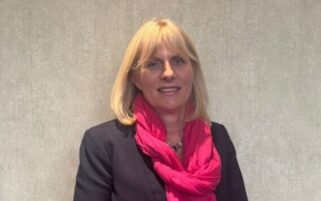I was updating our employee records the other day in preparation for another Quality and Outcomes Framework (QOF) visit, writes Karen Reid. I surprised myself with the knowledge that I have worked at Thornley Street Surgery for nearly 20 years, which made me think of the changes that have occurred since I came for my interview in 1989.
Before I joined, the original practice had been located in the hub of Wolverhampton city centre in a 19th-century Georgian building. The practice moved in 1987 and is now situated only a short distance from the original premises, but still within easy walking distance of the shopping centre and tram, train and bus links.
The practice operates from a row of terraced houses. Originally we occupied four, but over the years we have gradually expanded to occupy six houses with a seventh house rented.
The building is unexpectedly large and modern inside; visitors are often surprised and have compared it to “Mary Poppins’ handbag” or, my favourite, “the Tardis”. It’s not surprising these comments are made – we have 15 consulting rooms (including three for our nursing team, three for teaching medical students, health visitors and counsellors), plus a rest room for admin and reception staff.
The accommodation is stretched out over two floors with a lift for patient access. Our building is within the conservation area of Wolverhampton, and the partners have invested in the building to make it feel a little less clinical and more patient-friendly with its welcoming ambiance. The patients seem to appreciate this, especially in the warmer weather when patients seated in the waiting room enjoy the cool breeze of the air conditioning prior to being called into the doctors’ equally cool rooms, bliss!
Staff and skills
There have been some changes in the partnership over the years. From the original three doctors we now have six, each of them specialising in their own area of expertise. As well as being senior partner since 1989, Dr Crossley is also a trainer and mental-health expert. Dr Watson is our clinical governance lead and specialises in general medicine and care of the elderly. Dr Richardson is our gynaecological and family-planning expert and also provides clinics for our population of asylum seekers. In addition to being our QOF lead, Dr Stone’s expertise also applies to diabetes and genetics. Dr Mahmood is our endoscopy specialist and Dr Dobie is a trainer, infection control lead and runs clinics for learning-disability patients.
In 1992 we began teaching registrars. Education has always been a high priority and since 1999 we have had the opportunity to teach medical students from Birmingham University, with numbers fluctuating between 14 and 19 per week.
Our nursing team consists of three nurses who combine their skills to provide, among their many activities, nurse-led clinics in diabetes and footcare. We recently piloted a computer cognitive behaviour therapy programme to patients, which was provided by our counsellor. This has had very impressive success rates and has been disseminated as a model to other areas within the primary care trust. We are fortunate to have attached staff including an alcohol counsellor, a phlebotomist, a midwife, a health visitor and a nursery nurse. Many such staff come and go during the week’s activities.
Patients and multilingual services
Our list size is around 9,500 patients, comprising established households and families, residential and nursing homes, homeless and street dwellers, students, asylum seekers/refugees and immigrant workers.
We have always had a non-judgemental approach when it comes to registering patients providing they meet the registration geographical criteria. Being an urban inner-city practice, some of our patients have drug addiction or mental-health issues. Having registered patients of all faiths and nationalities has heightened our awareness of the cultural diversities this population presents.
We provide interpreted clinics in Kurdish and Farsi, but this is only a small proportion of the interpreter services we use – 25 different languages are used on a regular basis, ranging from French, Congolese, Somalian, Polish and Mandarin Chinese, to name but a few.
Many patients register with us after recommendations by their friends, relatives or clinical workers. This is frequently the case for mental-health patients. I once witnessed a patient, in the process of registering, saying to the receptionist very seriously, “I’ve come here because Dr Crossley is the best mad doctor in Wolverhampton”. High praise indeed from an expert!
We have adjusted the appointments over the years to reflect the patients’ needs. We offer advance and routine appointments, as well as day emergencies with the duty doctor of the day. Surgeries run from 9-12am and from 2-6pm. We are always open to ideas and suggestions. When the patient survey identified patients’ requests for weekend appointments, we obliged with routine appointments available with both the nurse and doctor from 9am-1pm.
A normal working week for our practice would comprise of: routine and emergency appointments on a daily basis; two clinics for child and baby injections; diabetic, postnatal, asylum and phlebotomy clinics; two tutorial sessions for the registrars; and supervised medical-student clinics run by the registrars’ tutor.
In addition, we also provide (on a less frequent basis) minor-operation clinics, learning disability health check clinics, glucose-tolerance clinics run by the practice nurses and, of course, seasonal clinics for flu immunisations. That’s not forgetting the weekly clinical multi-team meeting attended by palliative-care nurses, practice nurses, health visitors, district nurses, community psychiatric nurses and partners. There is never a dull moment in the day.
Day in the life
I always start my day off with every good intention of getting a project completed, updating information or completing the endless rainforest of paperwork for the primary care trust (it’s hard to believe we are paper-light, given the amount on my desk right now).
Like most managers, multi-tasking is second nature. Usually I start the day getting into our Emis Primary Care System (PCS), which can take some time, but eventually I catch up with the task list sent to me by staff and partners alike. Before I move onto my emails I usually need a cup of coffee, as my inbox might contain anything from 20 emails (on a really quiet day) up to 80 or 90 (if I’m really in demand). As I don’t have my own direct telephone number, it’s more convenient for most people to contact me by email, so in a way I guess I should stop moaning and get on with it!
A proportion of time is spent organising the practice. I discuss our appointments schedule with one of our administrative team, forecasting patient demand, taking into account the work/life balance of the staff doctors and the clinical skill mix required. It can at times appear to be a bit Mystic Meg, but on the whole it works well and generally we get the balance right.
Some of the day is punctuated by interruptions from the staff/nurses or registrars; this can be anything from equipment/maintenance issues to vaccinations, patient group direction guidelines, finance; the list could go on and on.
Thankfully, I have a small but dedicated admin team to whom I am able to delegate a proportion of this work. I am always mindful of the fact that from a small team of five receptionists we have now grown into a strong team of 16 receptionists and administrators.
The only way we can operate effectively is communicating utilising our EMIS PCS computer system to send admin/patient tasks and flashing messages. This is not a distraction, as often they are informative and welcome – especially when it comes to the arrival of chocolate cake. It’s not compulsory to be able to bake, but it’s generally accepted as most welcome, and usually it’s a reliable measure of the stress levels within the practice if biscuit consumption reaches epidemic proportions.
I still find the practice vibrant and exciting even after all these years, and I have enjoyed seeing the surgery develop and grow. It has been interesting not only to be a part of this change but also to look forward to what may come. I often think, “I couldn’t have this much fun at home,” and while some days this may be an optimistic interpretation I wouldn’t have missed the experience for a moment.



